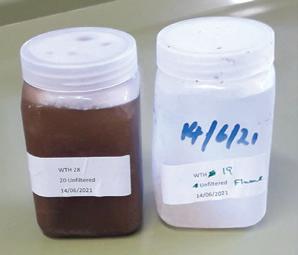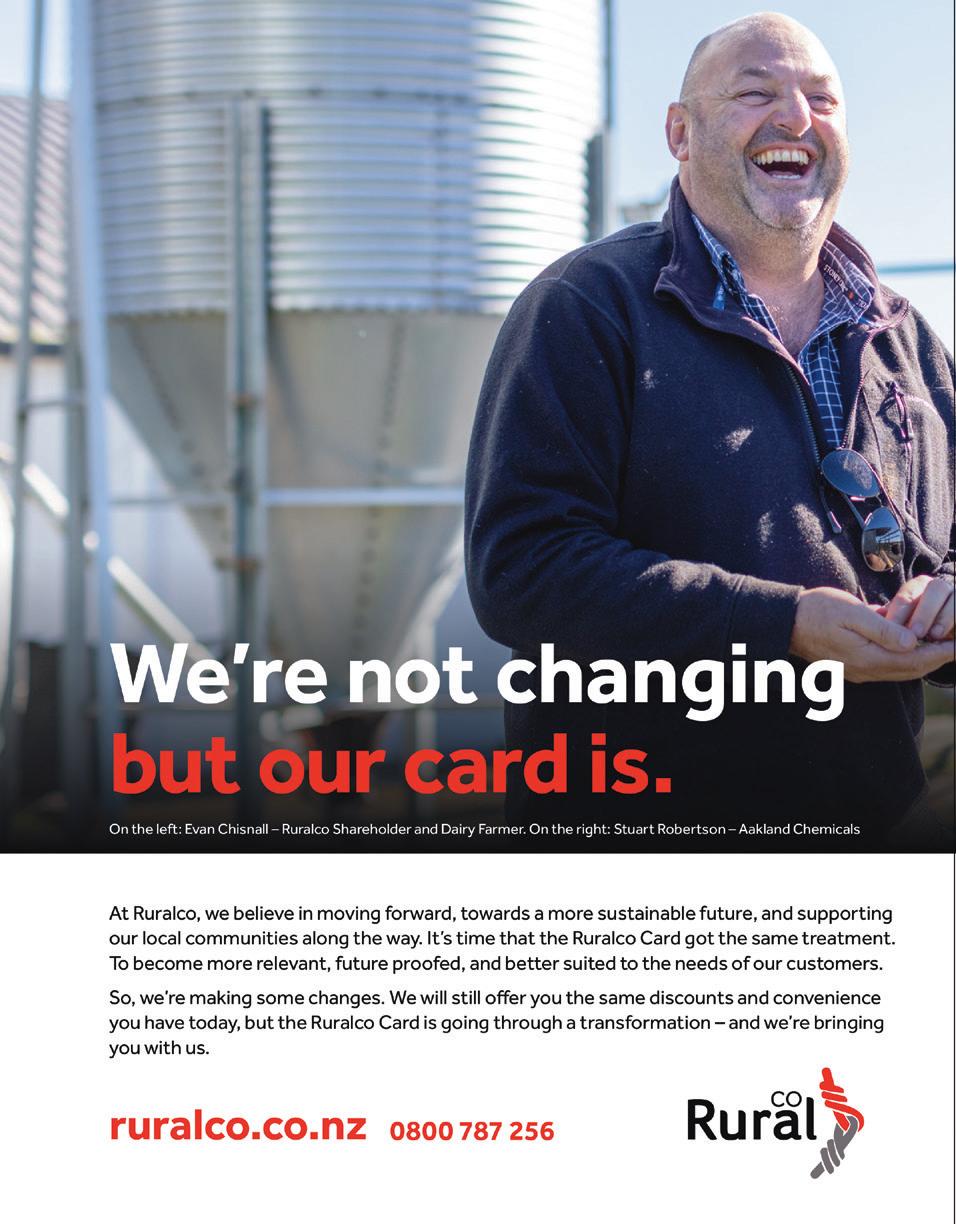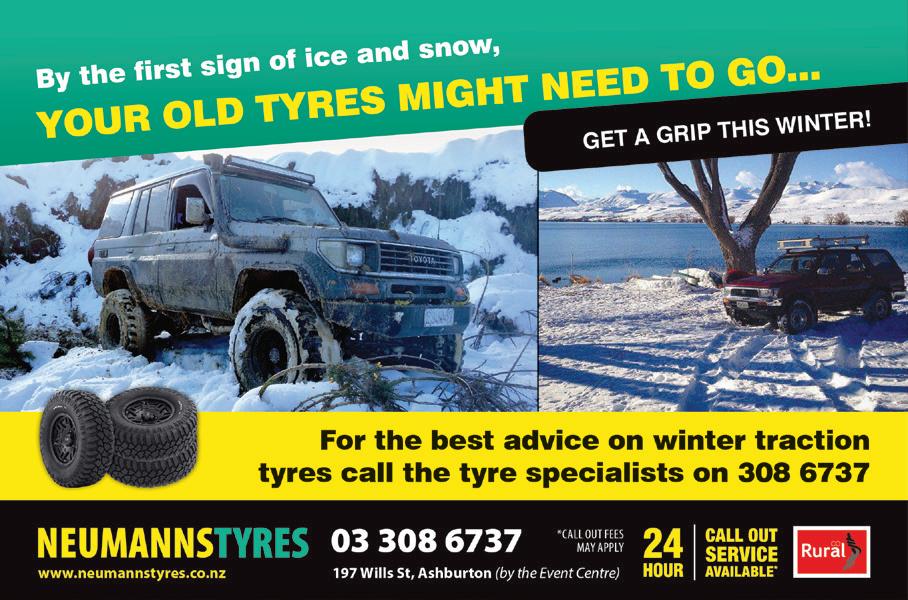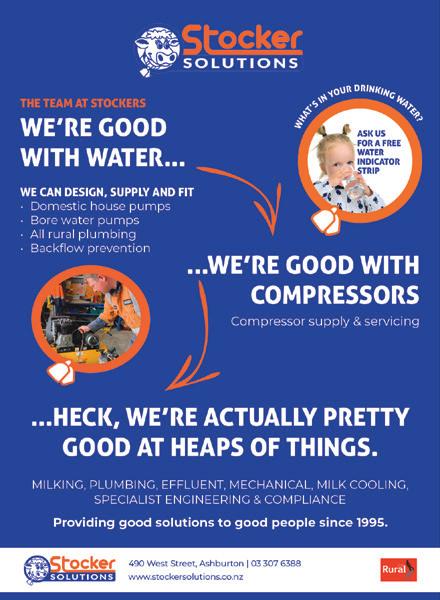
3 minute read
Trial highlights importance of
by Ruralco
Trial highlights importance of protecting Critical Source Areas
As stock is transitioned onto winter feed crops, Beef + Lamb New Zealand is reminding farmers of the importance of leaving some highrisk areas in winter forage paddocks ungrazed.
Advertisement
WORDS AND IMAGES SUPPLIED BY BEEF + LAMB
NEW ZEALAND
Critical Source Areas (CSAs) are low-lying parts of farms such as gullies and swales where run-off accumulates. The run-off from CSAs carries sediment and nutrients into waterways, so managing these areas will help reduce sediment and nutrient loss and water contamination. Jane Chrystal, B+LNZ’s Principal Science Advisor – Farm Systems & Environment, says the protection of CSAs is just as important when grazing sheep as it is when grazing cattle and the interim results of a Landcare Trust/ AgResearch study ‘Understanding the impacts of sheep wintering’ reinforced the value of leaving these areas ungrazed. Under good practice winter grazing management, CSAs should be fenced off and left ungrazed until spring or summer and ideally, these areas should be left in grass which acts as a filter and sediment trap. Jane says results from the trial comparing contaminant and sediment loss on similar paddocks, one where the CSAs were grazed while the other was ungrazed, were consistent and significant. While both paddocks were sown in kale and under a similar management regime of topdown grazing and two breaks of five days, there was a marked difference in the amount of suspended sediment in the water samples collected from each paddock after rainfall events. Even before analysing the suspended sediment data, the scientists found visually striking evidence of the immediate effectiveness of the CSA on reducing the loss of soils from the paddocks. “These differences provided an immediate indicator that the CSA was having a demonstrable impact on retaining soil and sediments eroded from the uphill portions of the paddock.” Subsequent analysis of the suspended sediments from all rainfall events throughout the winter of 2021 supported these results. Jane says the trial, which started in the winter of 2020, is being run on a commercial farm in Waitahuna West Otago with the goal of understanding the impacts of winter sheep grazing management on several environmental indicators. “These results highlight the importance of keeping stock away from CSAs during winter and valuing these areas for their ability to prevent soil and contaminant losses.” Jane encourages all farmers growing winter forage crops to work through the Forage Cropping Management Plan which is a chapter in B+LNZ’s Farm Plan Environment Module or available as a stand-alone resource. “This plan will help farmers identify their risks and plan how they will make the best use of their winter feed resources while protecting their environment and animal welfare.” “Just as a reminder, as much as possible crops on slopes should be strategically grazed from the top down, so the standing crop acts as a filter, and breaks should be long and narrow. There should be a 5m buffer between any forage crops and waterways and this buffer should increase as the slope increases.” After grazing, a catch crop such as oats, sown as soon after grazing as possible will capture any nutrients left in the paddock and use them to drive dry matter production. Jane says oats are ideal as a catch-crop because they are more winter active, and therefore are growing when the bugs in the soil start turning the ammonium from the deposited urine into nitrate. Once the soil temperatures warm up enough to start the oats growing, it is exactly the same time as the nitrification process kicks into gear. Oats, with their larger seed, are also more robust and have deep roots to capture the soil N. The Forage Cropping Management Plan along with information about winter grazing management is available on the B+LNZ website.
ABOVE: Critical Source Areas in winter forage crop paddocks should be left ungrazed to reduce soil and nutrient loss and water contamination. BELOW: There was a marked difference in the amount of suspended sediment in water samples collected from paddocks in a trial comparing grazed and ungrazed CSAs.



















